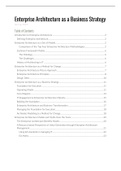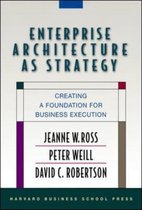Summary
Summary Enterprise Architecture as a Business Strategy - ALL reading material and ALL lectures
- Course
- Institution
- Book
Deze samenvatting bevat al het verplichte materiaal voor het tentamen van 2023: - Roger Sessions (article, 2008) - Sowa and Zachman (article, 1992) - Kappelmann and Zachamn (article, 2013) - Groot, Smits, and Kuipers (article, 2006) - Haki and Legner (article 2013) - Haki and Legner (article,...
[Show more]




